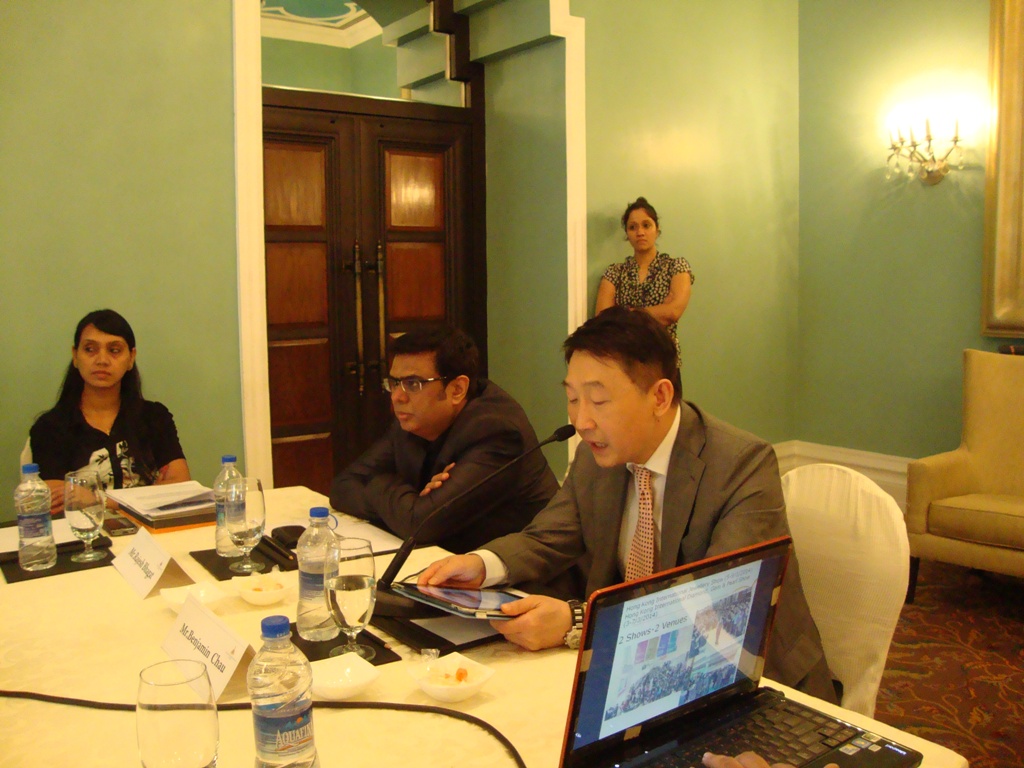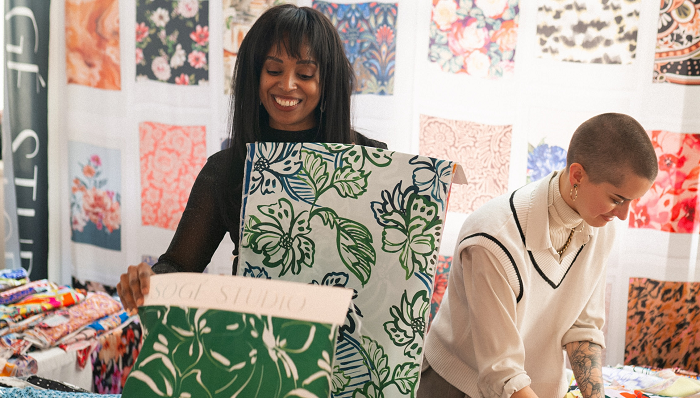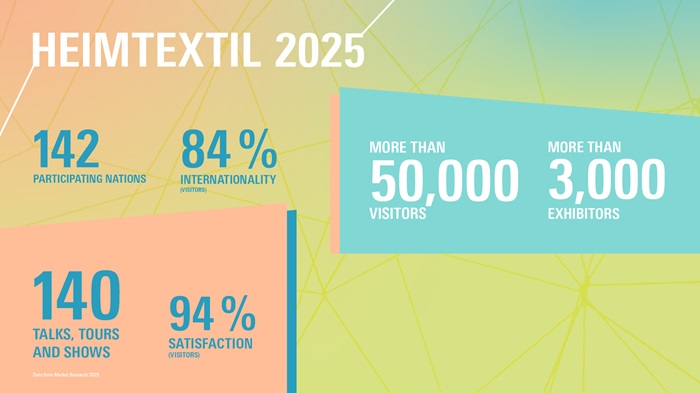FW
The Bangladesh government is giving a stimulus package to the crisis-hit apparel industry to increase production capacity and offset losses suffered by the sector due to political instability in the country. This was stated by Finance Minister AMA Muhith during a meeting with a business delegation comprising of readymade garment (RMG), knitwear and textile leaders.
The FM said the government would be giving a stimulus package to the RMG firms that have suffered huge losses to increase their competitiveness, and a decision on this would be announced by the end of December, 2013.
Muhith said that the central bank’s loan policy will most likely be relaxed by this month for the apparel manufacturers in the country. The move comes in response to the demands from garment manufacturers and exporters in Bangladesh who stated that the current loan classification policy, which marks a loan to be classified when the repayment period is overshot by three months, is putting excessive pressure on them to make their payments.
At the meeting, Bangladesh Garment Manufacturers and Exporters Association (BGMEA) President Atiqul Islam, presented a three-point demand on behalf of garment manufacturers to make up for the excess cost incurred by them following the latest hike in wages, as well as another eight-point demand to compensate the losses suffered due to political unrest.
The demands included banking support and special loans, reduction of tax on export earnings, two-year exemption from classifying loans of textile, garment and backward linkages, financial incentives to explore new markets and more. The president of Federation of Bangladesh Chambers of Commerce and Industry (FBCCI) Kazi Akram Uddin Ahmed, president of Bangladesh Knitwear Manufacturers and Exporters Association (BKMEA) AKM Salim Osman and president of Bangladesh Textile Mills Association (BKMEA) Jahangir Alamin as well as representatives from Bangladesh Bank were also present at the meeting.
Bangladesh will hold it’s the maiden Denimsandjeans Show Bangladesh in Dhaka from March 1-2, 2014 in association with Denim Expert. A number of key denim suppliers, who have already signed up for the show, will showcase their products to a select and invite only audience of denim buyers, designers, sourcing people etc. The products displayed by these companies will cover all the major trend areas currently prevalent in denim.
Eco sustainability and recycling aspects of the industry would be an important component of the show. The show will also have some of the best companies in the denim industry worldwide bringing their latest developments to the select audience of buyers who are individually being invited. As it is an invite only show, visitors wishing to join can connect with the buying, sourcing, designing and other related activities.
Denim is one of the most important woven denim apparel being manufactured in Bangladesh with a number of large and small factories as part of this group. In the initial years after the MFA phase out, Bangladesh’s main USP was its low price and attracted retailers looking for basic low priced jeans, shirts, children’s garments etc. However, the industry developed rapidly as skills improved, with large contributions from a number of expats employed from India, Turkey, Italy etc, leading many of the companies to evolve out of the basic levels and move on to higher levels of denim productions. This enabled them to cater to a number of highly quality conscious brands like G-Star, Uniqlo etc.
Most of the major world retailers and brands either have their own offices or use the over 300 buying offices located mainly in Dhaka, to source about $20 billion of apparel from Bangladesh. This concentration of buyers and manufacturers creates a microcosm of intense apparel related activity which has been multiplying in the last few years at a fast pace.
 Hong Kong-India’s trade partnership is on the upswing. Highlighting the growing trade ties, Benjamin Chau, Deputy Executive Director Hong Kong Trade Development Council (HKTDC) said, “We are glad to see that India has been grown to be one of Asia’s most significant countries. India’s middle class is expanding with increasing spending power which generates tremendous trade opportunities and poses great impact on the regional economy.” Chau further added, “The bilateral trade between the two economies is particularly strong at industries including precious and semi-precious stones, jewellery, electronics, IT, and textile, all of which are leading industries in this booming country.”
Hong Kong-India’s trade partnership is on the upswing. Highlighting the growing trade ties, Benjamin Chau, Deputy Executive Director Hong Kong Trade Development Council (HKTDC) said, “We are glad to see that India has been grown to be one of Asia’s most significant countries. India’s middle class is expanding with increasing spending power which generates tremendous trade opportunities and poses great impact on the regional economy.” Chau further added, “The bilateral trade between the two economies is particularly strong at industries including precious and semi-precious stones, jewellery, electronics, IT, and textile, all of which are leading industries in this booming country.”
He said India was the 7th largest source of Hong Kong imports in the first three quarter of 2013. Hong Kong’s import from India reached $8.8 billion. “So we are actually enjoying the balanced trade. We import 1.2 per cent of yarn from India,” said Chau.
HKTDC fairs see larger Indian participation
Buyers from India visiting HKTDC fairs for product sourcing have been on the rise in the last few years, a rise of 5 per cent. “We encourage Indian enterprises to capitalize on international trading opportunities our trade fairs offer to reach out to the massive global buyers and tap into other flourishing markets in Asia as well as the Chinese mainland,” Chau explains.
Supported by quality international exhibitors and buyers, HKTDC trade fairs are a one-stop sourcing and marketing platform. Buyers and exhibitors can capitalize on the opportunities to gather the latest market intelligence, and most important of all, form partnerships and expand business network. “With closer collaboration between India and Hong Kong, and with our concerted effort, a stronger bilateral trade relationship and more business opportunities can be developed. HKTDC, will continue to assist in bolstering bilateral trade relations between India and Hong Kong,” Chau said.
The Hong Kong fashion week started in the year 1970 and is one of the largest fashion fair in Asia, probably the second largest in the world. Elaborating on the shows, Chau said, “The January show will have 1,600 exhibitors and the July show have around 1,200. The fashion week will cater to the needs of the OEM garments and we also have another show called World Boutique Hong Kong catering to branded garments. There are around 300 exhibitors catering to 600 brands. If you add World Boutique and Fashion Week together then we have close to 1,900 exhibitors which is a big competition.”
As for initiatives taken to make the fair relevant for Indian exhibitors, Chau said, “We offer business opportunities and bring international buyers to talk to them and network with them. This is the best incentive I can offer to Indian companies. To encourage Indian visitors, HKTDC engages the media and informs them about the offering in the business arena, bringing international buyer to the show to network with Indian companies, putting them on the limelight,” reveals Chau.
Marks & Spencer has partnered with SDC Enterprises and UL VS UK to develop and produce a new Multifibre Adjacent fabric, SDCE Multifibre. The existing Multifibre fabrics (DW type), approved for use in M&S accredited testing, contain an acetate component which is considered to be no longer commercially relevant. This acetate component has been replaced by a lyocell component, which is more relevant to the fibres commonly found in modern fabrics for general apparel.
SDCE Multifibre LyoW is the first major development of a Multifibre adjacent fabric since SDCE Multifibre DW was introduced in 1987. The use of SDCE Multifibre LyoW will be exclusively for M&S test methods and M&S accredited laboratories. Extensive testing has confirmed that the specific regenerated cellulose fibre selected, the Lyocell component, provides an optimum level of staining to accurately predict the staining performance of the principal types of regenerated cellulose (Lyocell, Modal and Viscose), and their blends. The testing also demonstrated that the substitution of the acetate fibre with a Lyocell fibre does not, in any way, alter the staining performance of the other five fibre components.
To ensure continuity and reproducibility of the staining performance, between batches of SDCE LyoW and between merges of yarn, SDCE have introduced a number of new dye injection test methods. These tests will be conducted in addition to those methods, originally developed by SDC, adopted under ISO 105 F10 – as referenced in M&S C03.
To readily distinguish between SDCE Multifibre LyoW and DW type Multifibre, SDCE has positioned its security thread in the selvedge alongside the Lyocell component. SDCE Multifibre DW has the security thread on the same side as the wool stripe, wool being the most easily identified component.
Chinese textile giant, Shandong Ruyi Technology Group has made a prudent move by acquiring 52 per cent share of Masood Textile Mills Limited (MTM), the most technologically advance enterprise in Pakistan. Chinese have been actively seeking Pakistani partners during the last six months. Textile entrepreneurs in China are losing their competitive edge in home country because of very high wages. Per capita income in China has now exceeded $6,500, which is almost five times higher than the per capita income in Pakistan.
“They tried other low cost destinations like Vietnam and Bangladesh but the low textile base in these countries did not provide them with the desired results,” he said, adding that Pakistan has one of the best basic textile industries in the world and abundant workforce well versed with textile production.
Chinese have been trying to acquire full ownership of local textile units. The textiles mills in Pakistan are now much better off and do not want to sell their mills. Textile experts point out that the said mill is perhaps the only Pakistani enterprise that remains in direct contact with the stores of its foreign buyers. It monitors online the sales pattern in these stores, including the colours that are preferred by the buyers. It, thus, could plan the replenishment of the depleted stocks quick. The direct shipment to the stores reduces the inventory cost of the buyers, besides increasing their sales, they said.
Chairman Punjab Industrial Estates Development and Management Company (PIEDMC) S M Tanveer said this is just the beginning. “We are expecting huge Chinese investment in textiles as soon as the special industrial zones are developed,” he said, adding that PIEDMC is working fast to complete its zones. He said in the meanwhile the Chinese would be accommodated in the textile city being developed at the Sundar Industrial Estate.
The International Apparel Federation has welcomed the new WTO multilateral trade agreement that has been reached in Bali. The ‘trade facilitation’ package, the prime component of the agreement, is certainly beneficial to the global apparel industry. This industry has probably the most internationalized supply and demand structure in the world, and with a growing market share of large retail chains and brands with a global presence, internationalization is increasing still. The OECD trade facilitation indicators estimate that comprehensive implementation of all trade facilitation measures agreed to in Bali would reduce total trade costs by 10 per cent in advanced economies and by 13-15.5 per cent in developing countries. Currently, complicated border processes and excess red tape raise costs, which ultimately fall on businesses and on consumers. Reducing these costs is a large benefit to the apparel industry.
The IAF also welcomes the fact that this WTO agreement shows that the agricultural sector does not always block advances in multilateral trade agreements, as has happened too often in this Doha Round. It also serves as a wakeup call to the apparel industry that despite the real progress that is being made in multi- and plurilateral trade agreements, the multilateral trade agenda deserves more attention. The IAF, representing the apparel industry in all continents, will boost the discussion among its members about the desired direction for the apparel industry of further multilateral trade negotiations.
With a retail value of over $1.3 trillion much of which crosses borders, the apparel industry is well placed to reap a large benefit from the Bali agreement and could potentially benefit from the revival of multilateral trade talks that seems to be emerging from the Indonesian island of Bali.
www.iafnet.eu
Pakistan's garment manufacturers are anticipating significant trading benefits from an expected accession to the European Union's (EU) new Generalized Scheme of Preferences Plus (GSP+) trading scheme from January 2014.
Some are asking the Pakistan government to relax import duties blocking access to raw materials, especially artificial fibre, needed to diversify product lines so that they can take full advantage of the facility. These can be as high as 6.5 per cent and they also want Pakistan utilities to improve unreliable water and energy supplies so an increase in demand through GSP+ can be met.
Adil Butt, former chairman of the Pakistan Hosiery Manufacturers Association (PHMA), said the GSP+ status could reopen garment manufacturing units that currently were idle for lack of export orders. SM Tanveer, Chairman of the Punjab zone of the All Pakistan Textile Mills Association (APTMA), also wants the government to relax import policies blocking access to raw materials, such as artificial fibre that is in short supply within Pakistan, and needed for diversifying product lines.
Another former PHMA chairman and a leading knitwear exporter, M I Khurram, now head of an APTMA committee tasked with making recommendations on improving value-added textile exports, told media that GSP+ should make a difference. In 2012, Pakistan exported $654 million in knitted or crocheted apparel and accessories to the EU. Pakistan also exported $949 million in clothing that was not knitted or crocheted the same year. Meanwhile, Europe exported $2.5 million in apparel and clothing accessories that was not knitted or crocheted to Pakistan, and $2.8 million worth of apparel and clothing accessories that were not knitted or crocheted the same year, according to world trade data.
Invista, owner of Lycra fibre and Lenzing, producer of man-made cellulose like rayon, modal etc, are working in tandem to deliver a unique solution to the industry which is cellulosic denim fabrics with significantly improved shape retention. “Given the growing popularity of both Lycra and Tencel fibre in the denim market, it was only natural that people wanted to combine them to come up with really amazing fabrics”, said Federica Albiero, Invista’s Denim Account Manager.
To address these issues Invista looked to its Lycra dualFX fabric technology, which combines two stretch fibres; Lycra fibre and Lycra T400 fibre into a single yarn. Invista ran trials pairing this technology with blends of cotton and Tencel fibre. The trials showed significant improvement in fabric recovery and slippage to the point where the fabric performance met or exceeded Invista’s and the industry’s standards.
“This initiative represents two globally innovative fibre companies working together to provide the denim market with fabrics that meet the performance needs of modern consumers”, says Michael Kininmonth, Senior Project Manager of Denim at Lenzing Fibres Inc. “Superior comfort with stretch and long-lasting recovery are set to become the next core product in women’s wear.” Jeans with Tencel fibre are attractive, durable, and become immediate favourites thanks to their enhanced comfort. The fibre’s smooth surface and optimal moisture transfer benefits turn jeans into articles of clothing that enhance physical well-being while still being on-trend. The revival of Tencel fibre in denim is also due in part to the environmental factor. Blending Tencel into denim fabric results in a significant improvement for the environment because it is made from wood grown in sustainably managed forests.
Olah Inc, denim-focused fabric and apparel company has named Michael Morrell as the new head of its textile division, replacing Andrew Olah who will focus on other parts of the business. Morrell is currently President of Olah, and is an expert textiles, denim and garment dyer who has worked at Jones Apparel Group, Swift Denim, and Roxboro Dye Co. "We've been planning this shift for some time and I am happy for the opportunity to evolve our textile sales division and continue to help our mill partners develop the best textiles possible," Morrell said.
Andrew Olah, meanwhile, will continue to act as CEO. However, he will devote his attention on the Kingpins Show, which he founded in 2004, and Olah Inc's consulting division, which is working with Bayer CropScience on several cottonseed brands and its e3 sustainable cotton programme. The company supplies US firms with denim, corduroy and piece-dyed fabrics.
Novozymes and China Knitting Industry Association (CKIA) signed a strategic partnership agreement in Beijing to jointly promote the sustainable development of biological solutions in the Chinese textile industry. In particular, the agreement addresses bio-innovative application and research in the knitting sector. The new cooperation between Novozymes and China’s knitting industry is set to include environmental improvements to sewage treatment at knitted fabric and knitwear enterprises at CKIA member companies, with specific goals set on energy conservation, carbon emissions and environmental protection for the industry, whilst testing, technical guidance and ‘microbial and biologically-efficient’ technology which aims to improve waste water management facilities will also be provided by Novozymes, according to a China Daily report.
In comparison to using certain chemicals during textile production, tests at companies such as Esquel have found that bio-enzyme technology in textile processing can contribute to lowering the dilution volume for toxicity and reduce water used in processing, thus lowering the expense of water and effluent treatment.
China’s textile production industry has been increasingly under media spotlight, with increased pressure for greater regulation and policy change evident from new chemical legislation, which will see the creation of toxic chemicals blacklist under China’s 12th Five-Year Plan for Environmental Risk Control on Chemicals. The policy requires factories to register with their local governments, open up for risk inspection and disclose information on the chemicals they discharge to the public.












